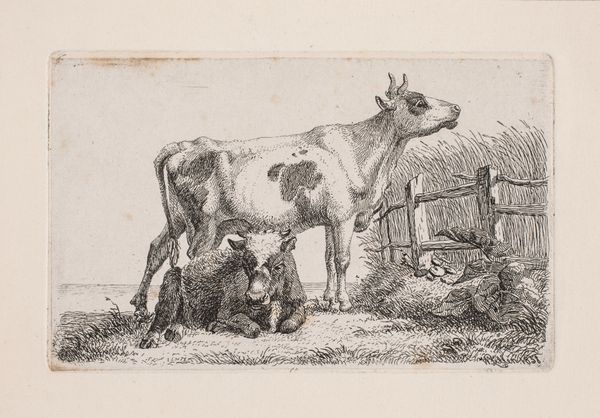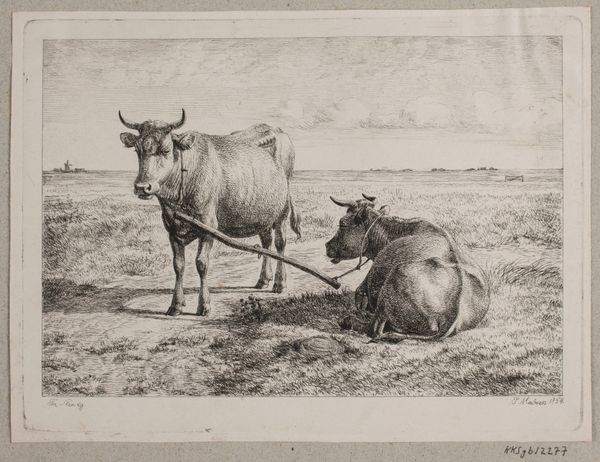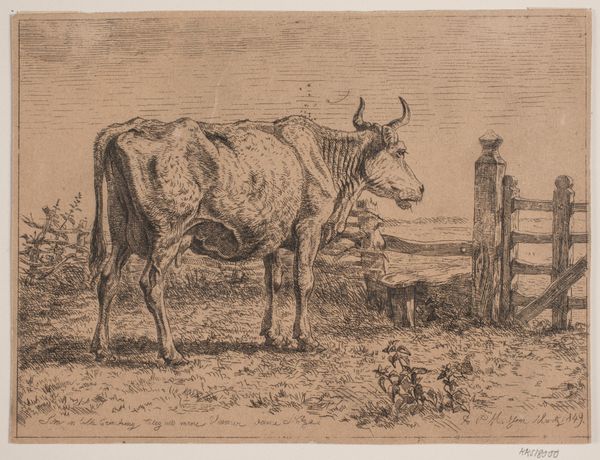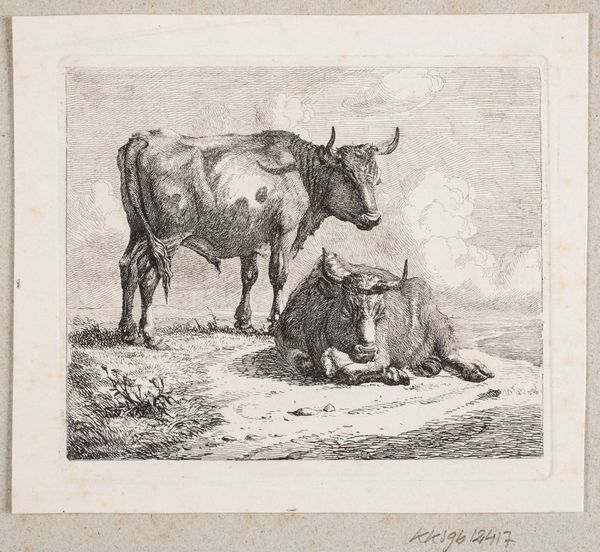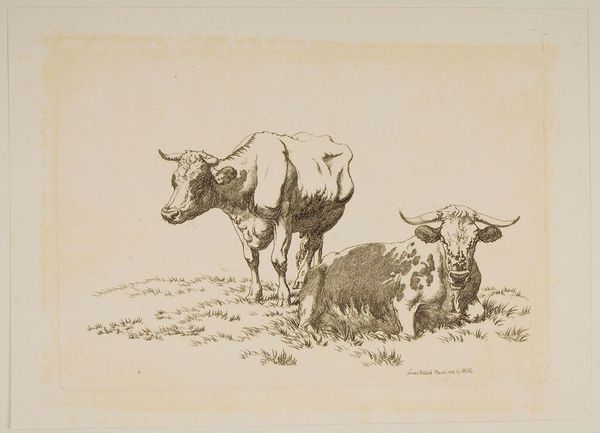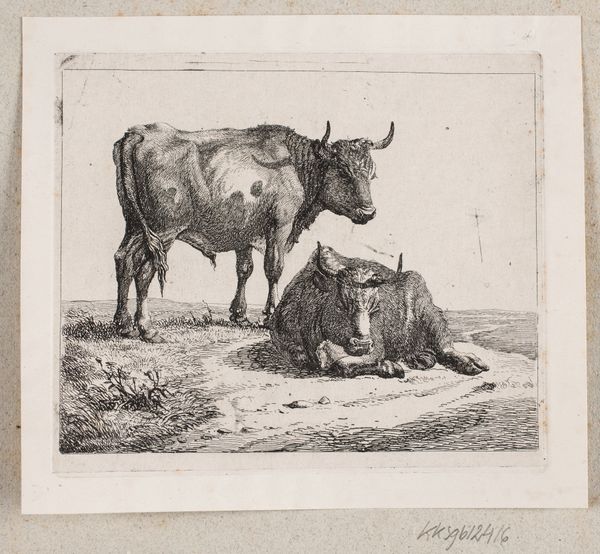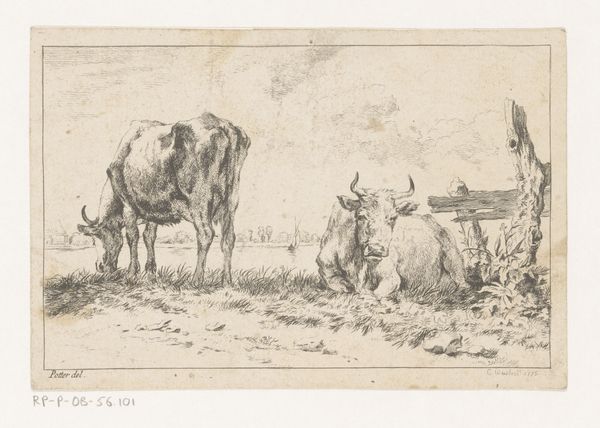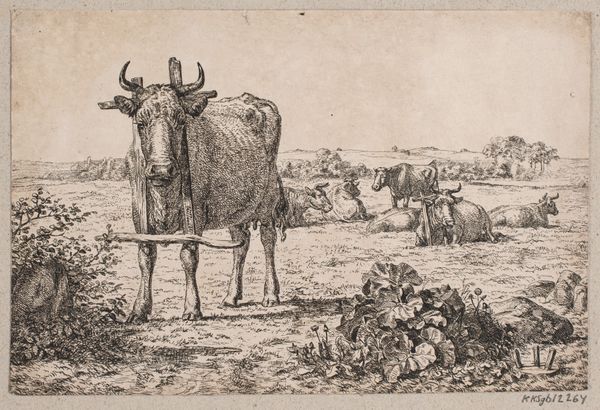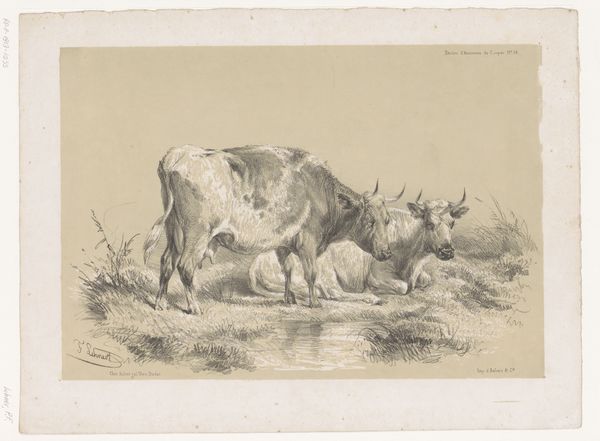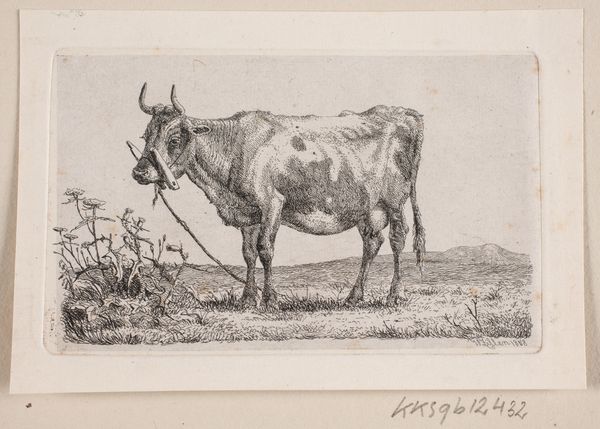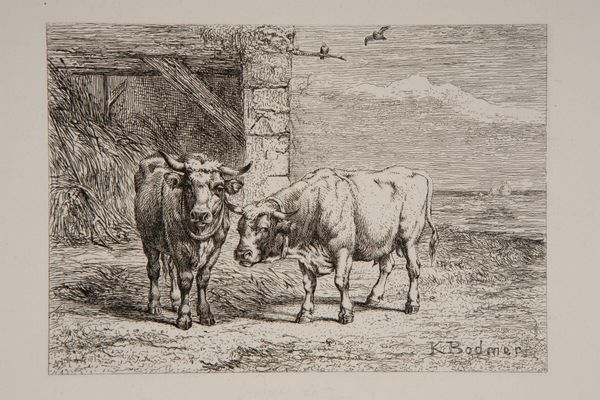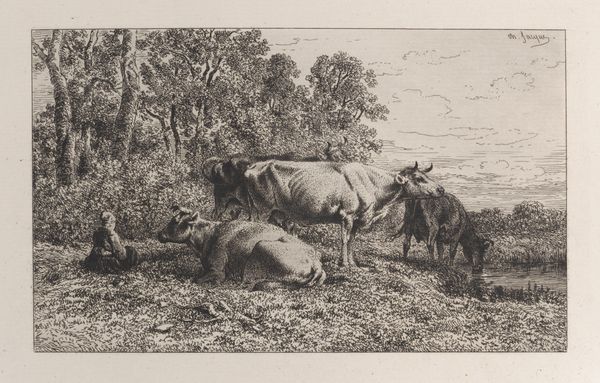
print, engraving
#
animal
# print
#
landscape
#
genre-painting
#
engraving
#
realism
Dimensions: 228 mm (height) x 444 mm (width) (plademaal)
Editor: Here we have "En tyr og to køer," or "A Bull and Two Cows," an engraving made in 1855 by A.P. Madsen. The scene has such a wonderfully pastoral feeling, but something about the bull standing separate from the others gives it a feeling of tension. How do you interpret this work? Curator: That separation speaks volumes, doesn't it? In the mid-19th century, livestock was strongly linked to notions of national identity and agricultural prosperity. Consider the bull, almost like a heraldic emblem standing guard. It symbolizes strength, virility, and a sort of rustic ideal. But the two cows are resting, their positioning possibly speaking to domesticity or the reproductive power necessary to perpetuate such bucolic imagery. Editor: So you’re saying it is more than just farm animals, they symbolize the vigor and continuity of Danish culture? Curator: Exactly. Notice also the simple watering hole beside them. Water, life-giving and essential, juxtaposed with the wear of the wooden enclosure. Everything, including composition, serves a purpose. It's a romanticized view, for sure, but loaded with symbols understood in its time. How does knowing this impact your original impression? Editor: It's fascinating. I saw the simplicity at first, but now appreciate the layered meanings—the connection between the land, animals, and the artist's vision of an idealized Denmark. Curator: Precisely. Art often serves as a mirror reflecting society's values and aspirations, but it is also capable of adding an emotional weight. We are fortunate when artists make visible an unseen narrative. Editor: I'll definitely look at genre scenes differently now. There is clearly much more to consider than first meets the eye.
Comments
No comments
Be the first to comment and join the conversation on the ultimate creative platform.
